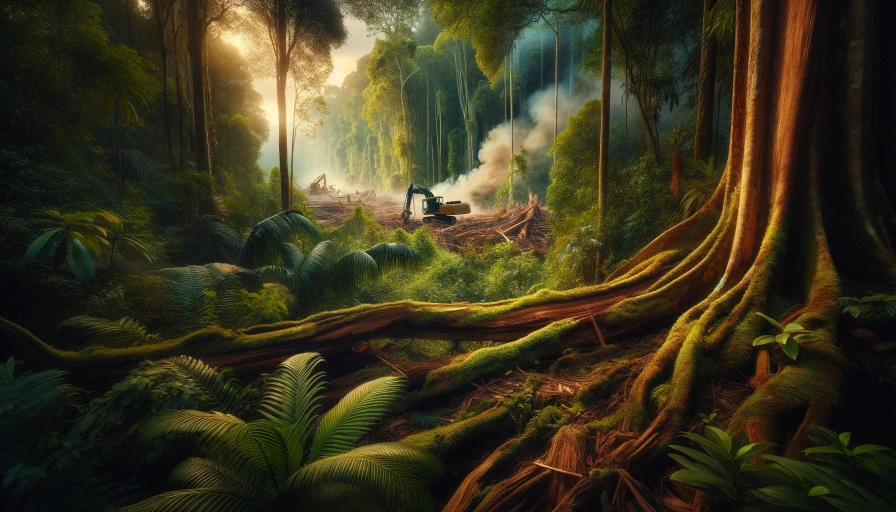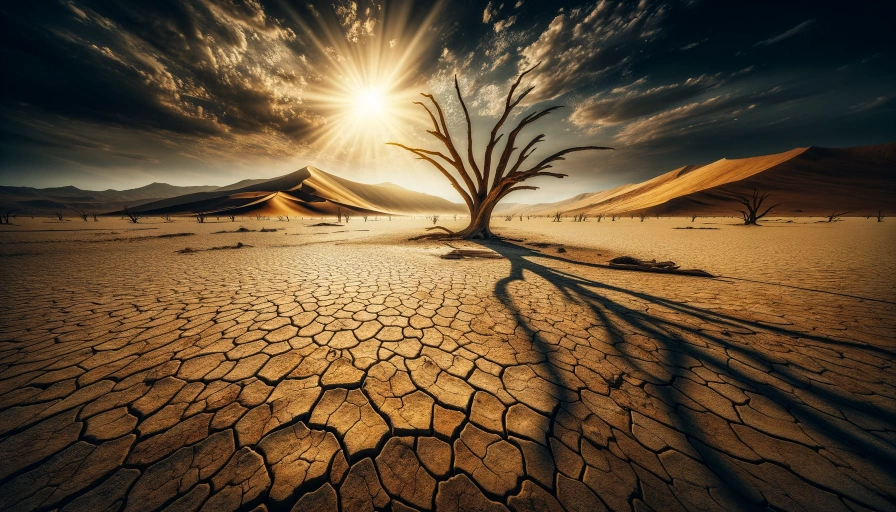Climate change and biodiversity loss are two interconnected global crises that pose a significant threat to ecosystems around the world. These challenges are driven primarily by human activities and are accelerating at an alarming rate. In this article, we will explore the links between climate change and biodiversity loss, their impacts on ecosystems, and the urgent need for conservation efforts to mitigate these threats.
Table of Contents

Understanding Climate Change
Climate change refers to long-term alterations in temperature, precipitation patterns, and weather events on Earth. The primary driver of climate change is the increase in greenhouse gas emissions, primarily carbon dioxide (CO2), methane (CH4), and nitrous oxide (N2O), resulting from activities such as burning fossil fuels, deforestation, and industrial processes. These gases trap heat in the atmosphere, leading to global warming and the disruption of climate patterns.
Biodiversity Loss: A Global Crisis
Biodiversity loss, on the other hand, refers to the ongoing depletion of species diversity within ecosystems. It is primarily caused by habitat destruction, over-exploitation of natural resources, pollution, and the introduction of invasive species. The loss of biodiversity is often considered a “silent crisis” as it receives less attention than climate change but is equally concerning.
The Interconnected Nature of Climate Change and Biodiversity Loss
Climate change and biodiversity loss are deeply interconnected and exacerbate each other in several ways:
1. Habitat Loss
Climate change alters temperature and precipitation patterns, which can lead to shifts in ecosystems. Many species are adapted to specific climatic conditions and may struggle to survive as their habitats change. This can result in habitat loss and fragmentation, which directly contributes to biodiversity decline.
2. Increased Extinction Risk
Higher temperatures and changing environmental conditions can stress species, making them more vulnerable to diseases, predators, and competition from invasive species. These stressors increase the risk of extinction for many plants and animals.
3. Altered Migration Patterns
Climate change can disrupt the timing and routes of animal migrations and plant flowering, causing mismatches between species’ interactions. For example, if a plant blooms earlier due to warming temperatures, the pollinators it relies on may not be present, affecting both plant and pollinator populations.
4. Ocean Acidification
The absorption of excess atmospheric CO2 by oceans leads to ocean acidification. This harms marine life, particularly organisms with calcium carbonate shells, such as corals and some shellfish. These changes in ocean chemistry can have cascading effects throughout marine ecosystems.
Impacts on Ecosystems
The combined effects of climate change and biodiversity loss are wreaking havoc on ecosystems worldwide. Some of the notable impacts include:
1. Disrupted Food Webs
As species disappear due to biodiversity loss, ecosystems may lose key components of their food webs. This can lead to imbalances and reduced ecosystem resilience, making them more vulnerable to disturbances.
2. Reduced Ecosystem Services
Ecosystems provide valuable services to humans, such as pollination, water purification, and carbon storage. As biodiversity declines, these services become compromised, affecting agriculture, clean water availability, and climate regulation.

3. Increased Vulnerability to Natural Disasters
Biodiverse ecosystems, such as wetlands and forests, play a crucial role in mitigating the impacts of natural disasters like floods, wildfires, and hurricanes. As these ecosystems are degraded, communities become more susceptible to such events.
The Urgent Need for Conservation
To address the intertwined challenges of climate change and biodiversity loss, urgent and coordinated efforts are necessary. Conservation strategies must include:
1. Mitigating Climate Change
Reducing greenhouse gas emissions is paramount. Transitioning to renewable energy sources, increasing energy efficiency, and protecting forests are essential steps in mitigating climate change and preserving biodiversity.
2. Protecting and Restoring Habitats
Conservation efforts should prioritize the protection and restoration of natural habitats, allowing species to adapt to changing conditions. This includes establishing and managing protected areas, reforestation, and sustainable land-use practices.
3. Sustainable Resource Management
Implementing sustainable fishing, forestry, and agricultural practices can help reduce the pressure on ecosystems and preserve biodiversity.
4. Raising Awareness
Educating the public about the importance of biodiversity and climate action is crucial. Individuals, communities, and governments must work together to drive change.

Conclusion
Climate change and biodiversity loss are inseparable challenges that threaten ecosystems and, by extension, human well-being. Understanding their interconnected nature and implementing conservation measures are critical for preserving the rich tapestry of life on Earth. It is not too late to take action, but the window of opportunity is closing rapidly. By addressing these issues urgently and comprehensively, we can hope to safeguard the health and resilience of our planet’s ecosystems for generations to come.
FAQs
How are climate change and biodiversity loss connected?
Climate change and biodiversity loss are interconnected as climate change can disrupt habitats and migration patterns, increasing extinction risks and affecting ecosystems’ health.
What are the impacts of these issues on ecosystems?
The combined impacts of climate change and biodiversity loss include disrupted food webs, reduced ecosystem services, and increased vulnerability to natural disasters.
What can we do to address these challenges?
Mitigating climate change, protecting and restoring habitats, practicing sustainable resource management, and raising awareness are essential steps to address these issues.
You May Also Like
- YOUTH ACTIVISM AND CLIMATE CHANGE: THE POWER OF THE NEXT GENERATION
- THE ROAD TO 100% RENEWABLE ENERGY: VISIONS AND STRATEGIES
- THE ENVIRONMENTAL CONSEQUENCES OF FOSSIL FUEL EXTRACTION
- THE ECONOMICS OF GREEN ENERGY: COST AND BENEFIT ANALYSIS
- THE ROLE OF GREEN ENERGY IN COMBATTING CLIMATE CHANGE
